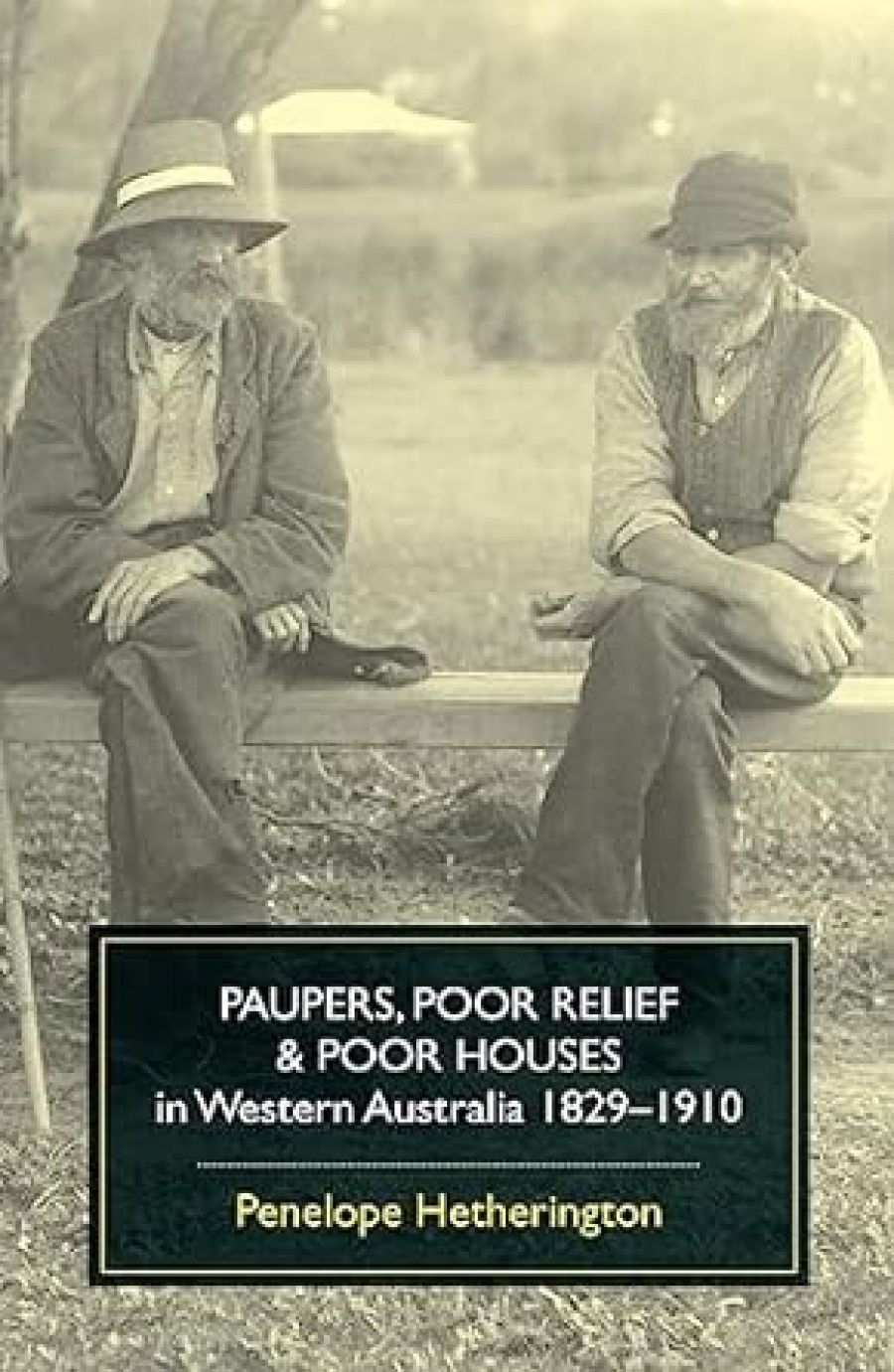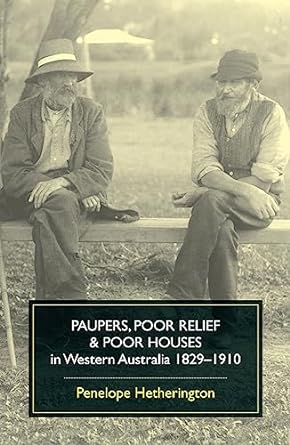
- Free Article: No
- Contents Category: History
- Review Article: Yes
- Article Title: Mere refuse in the West
- Online Only: No
- Custom Highlight Text:
The first attempt to settle Western Australia, in 1827, failed. This book brings home that the second attempt, in 1829, was also very fragile and could well have failed. By 1850 there were still only 5900 non-Aboriginal people in the colony. By any measure, this was well short of the critical mass of population needed to sustain development in such a remote and vast outpost.
- Book 1 Title: Paupers, Poor Relief and Poor Houses in Western Australia, 1829–1910
- Book 1 Biblio: UWA Publishing, $24.95 pb, 202 pp
- Book 1 Cover Small (400 x 600):

Penelope Hetherington’s book relates in great detail the ways in which these outcasts were, or often were not, supported. It is a fascinating story, with some themes that resonate with modern welfare systems. For example, in 1834 the colonial authorities introduced a ‘Work for the Dole’ system, called Task Work, which might have provided the model for the Howard government’s approach nearly two centuries later. The notion of the ‘dole bludger’ was already alive and well: ‘In considering the care of able-bodied paupers, we may as a general rule assume that they are the lazy … refuse of the labouring population ... Any sober steady man who is willing to work can always find employment.’ Payment of welfare in kind (flour or meat), not money, was a recurrent theme, too, reminiscent of elements of the 2007 Northern Territory Intervention.
The notion of labelling and shaming the poor was never far from the surface. In 1857 the official in charge of the Poor House urged the governor to make the residents wear an identifying uniform. The governor did not agree, but the suggestion confirmed how close welfare recipients were to prisoners in official perceptions. In 1882, breaches of Poor House rules became criminal offences, punishable by solitary confinement and a bread and water diet. Throughout the period, destitute lunatics were as likely to end up in prison as in a welfare setting.
For female paupers, access to welfare was overlaid by moral postures. Only ‘respectable’ women were allowed to enter the Poor House or to receive other welfare support. As late as 1892, unmarried pregnant women were routinely excluded. There was an official belief that this would somehow force the fathers to support the women and their offspring. However, as the law was applied on the basis that ‘no man shall be taken to be the father of any illegitimate child on the oath of the mother only’, this approach would seem to have possessed some inherent limitations.
Welfare, then, provided an opportunity for every kind of prejudice to be imposed on the poor. Change came about gradually. The churches were the first to supplement the government services. From 1868 both the Anglican and the Catholic churches began to provide some kind of support for destitute children. Ironically, the Catholic church had started to provide assistance for Aboriginal children a decade before it turned its attention to settlers. Charities emerged later, notably the Salvation Army. In the 1890s they started to provide support for women and children, not just in Perth and Fremantle but in country areas.
Hetherington sees Federation, the minimum wage case and the creation of a Commonwealth unemployment benefit scheme as the turning points in an unsavoury story. These events took place in the first decade of the twentieth century – hence the cut-off point of her book. However, the hazard in looking at history through the prism of welfare dependency is that a sense of perspective can be lost. At times one gets the impression that Western Australia must have been almost wholly populated by drunkards, lunatics, abandoned women and widows, and the halt and the lame, as well as numerous government officials. Yet Western Australia was, during this period, somehow progressing from a state of great fragility to one of relative prosperity.
That is possibly the key factor: until a state is viable in terms of population and wealth, welfare will be sporadic and dysfunctional. This is particularly so when a community is artificially superimposed upon the location; has not grown naturally from prior social relationships, but has brought together people and groups with no common bonds except survival and the pursuit of wealth.
We have advanced a long way. But some of the ambivalence and hostility towards the poor and destitute that Hetherington identifies is still with us today. There is currently something of an air of self-satisfaction abroad in the West, as if the wealth of the mining boom were somehow a symbol of superior virtue. UWA Publishing’s list seems calculated to remind us that Western Australia, like every other state, has some ugly stories in its past. Hetherington’s book elegantly tells one of those stories.


Comments powered by CComment